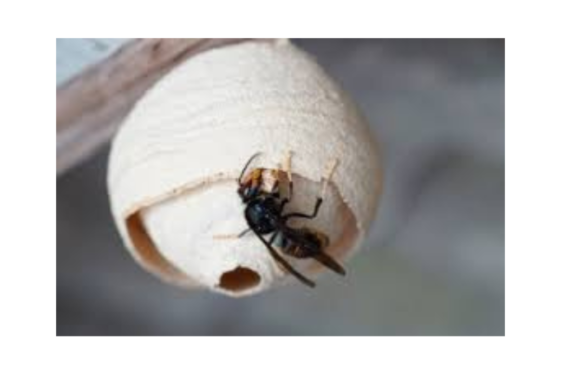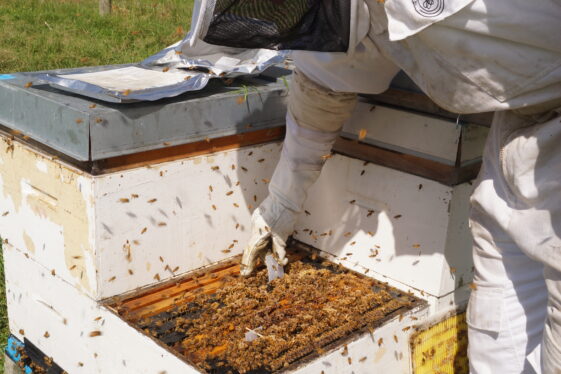Varroa: Out of the Frying Pan, Into the Fire
Varroa management is not what it used to be five, 10, or 15 years ago. That’s a statement everyone agrees with, but it’s in the actions taken to tackle this new reality where beekeepers diverge. The frying pan is getting hotter, with 100 different factors influencing your varroa levels during any given season; overstocking, climate, weather, cyclones, warm winter, neighbours’ inaction/sub-par treatment choice, treating too late, reinvasion, miticide tolerance, the list goes on. As always, it comes down to choice.
Focus on what you can control, starting with: Core 1st tier treatments in spring and autumn at full dose, for the full treatment period; alternate chemical class; monitor, monitor, monitor; add 3rd tier suppression tool(s) throughout the year. Alternatively, hop into the fire; only using 3rd tier soft/flash treatments, underdosing, not alternating, spot treating only, skipping or delaying a round because they ‘looked good’ etc. It’s important to acknowledge the immense pressure beekeepers are coming under through a poor crop for most, honey prices and cashflow constraints.
Historically, health and nutrition spend was the non-negotiable for cost-cutting, knowing how critical it is for bees to thrive and ultimately produce honey the next season. The reality of the last one, two, even three seasons makes the gamble worth a try for some. Unfortunately, not a week goes by without multiple emergency calls to help firefight varroa flames after the gamble has gone awry. Don’t take our word for it, the latest MPI Colony Loss Report on page 43 shows the stark contrast of real-world outcomes: Alternating core chemicals (e.g., Apivar & Bayvarol) and supplementing with oxalic between, has the lowest over-wintering loss rate, with the least variability. In contrast, Oxalic-only regimes have dramatically higher over-winter losses (2x worse) and painful variability (up to 55% losses).
These survey results perfectly mirror the feedback we receive. There are always exceptions. It is heartening that most prefer to leave Russian Roulette to the movie screen, where it belongs.
The Colony Loss Survey 2022 also revealed that out of the largest beekeepers in NZ (3001+ hives) only one of the 26 cited ineffective products as a factor explaining their varroa winter losses. Reinvasion, winter weather, did not treat at the right time, and ineffective dose were cited by the other 25.
All varroa treatments in New Zealand (and globally) have the same weakness: the higher the mite load going into the treatment, likely the higher mite load coming out the other end.
Treatment Trends
So what are the treatment trends that are working more consistently across the motu?
Get the core sorted. That’s ‘1st tier’ treatments such as Apivar and Bayvarol. Whatever you do – time it right, monitor and adjust as/when you need to. Two weeks can make a huge difference with a mite that grows exponentially.
Varroa management requires a 12-month strategy. Utilise suppression tools with the goal of slowing varroa build-up. That’s incorporating ‘3rd tier’ treatments in between the core spring/autumn.
‘3rd Tier’ Options
There are a wide range of varroa suppression options, all candidly come with their own unique pros and cons. Some being: low treatment cost but high labour/travel cost, pain to install and remove, hard on both the mites and the bees, variability in efficacy, temperature constraints, hard on bee gut health and beekeeper health etc. Ultimately, each beekeeper needs to weigh up these pros and cons, and how to integrate one or more of these into their operation. Options include the following. Seek advice from your fellow beekeepers and/or a trusted supply company, take that advice with a pinch of salt, and remember, none of the ‘cons’ are as bad for the bees as doing nothing at all.
- Adding another traditional strip treatment
- Formic acid (e.g., Formic Pro)
- Oxalic acid (vaporising, with glycerine, or trickle method)
- Thymol
Something Else to Consider…
The rapid colony growth in spring hides a multitude of sins. It’s the autumn switch that is most likely to reveal issues. The snowball effect of 12 months decision-making (and a multitude of variables) rolls towards the autumn and the exponential wave of mites overwhelms the tapering population of adult bees.
This can hit like a light switch. I’ve lost count of the times I’ve heard ‘they looked good two weeks ago, but…’. The most common solution offered by beekeepers is to use a quality treatment asap after honey supers come off, and utilise a suppression tool during the summer to minimise the build-up in the first place.
One More Tip
Here’s a simple tip to boost your strip treatment efficacy… Let’s get back to the basics: the leading strip treatments work by contact only. The more bees that get in contact with the strips, the more active ingredient they will collect from the surface. That is why the strips always need to be placed in the centre of the brood: this is where we can observe the highest activity in the hive, resulting in the highest number of potential contacts, and it’s also here that varroa mites will emerge from the brood cells.
During a long-action treatment e.g., 6 to 10 weeks for Apivar and 6 to 8 weeks for Bayvarol, it is not rare to see the strips covered by wax and propolis after several weeks. However, the propolis/wax will decrease the accessible surface on the strips for bees and therefore reduce the number of potential contacts. Moreover, after a few weeks, the bees’ cluster may have moved within the brood box. Thus, during your site visits, we advise scraping the strips systematically at mid-treatment (with a hive-tool) and repositioning them in the centre of the bee cluster.
Don’t just take my word for it… in France, a study (by ADAPI, the French Association for the Development of Beekeeping) found this simple habit of cleaning and repositioning strips resulted in a 1 to 4% improvement in treatment efficacy. Any varroa mite modelling will tell you, the hive health and honey production gains resulting from a 99% vs 95% efficacy result, is well worth achieving.
Original Publication: Apiarist Advocate – September 2023





